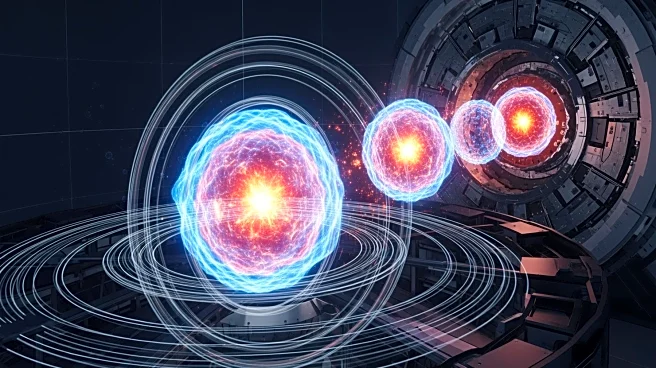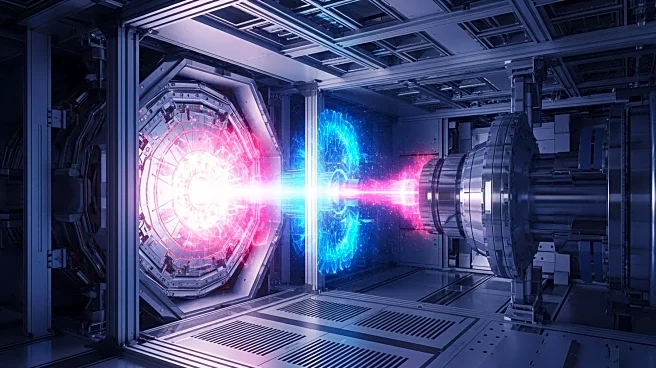What's Happening?
A new study led by Dr. Moorits Muru and colleagues from the Leibniz Institute for Astrophysics Potsdam suggests that dark matter could be responsible for the mysterious gamma-ray glow at the center of the Milky Way. Using advanced cosmological simulations,
the researchers propose that the dark matter near the galaxy's core may be arranged differently than previously thought, potentially explaining the gamma-ray pattern observed by NASA's Fermi telescope. This finding revives the hypothesis that dark matter could account for the 'Galactic Center Excess,' a phenomenon that has puzzled scientists for over a decade.
Why It's Important?
The study's implications are significant for astrophysics, as it repositions dark matter as a viable explanation for the gamma-ray excess in the Milky Way's center. This could influence future research directions and observational strategies, particularly with upcoming observatories like the Cherenkov Telescope Array. If confirmed, the findings could enhance our understanding of dark matter's role in cosmic phenomena, potentially impacting theories about the universe's structure and evolution.
What's Next?
Future observations with more advanced telescopes are expected to test the study's conclusions. These instruments could either confirm dark matter's role in the gamma-ray glow or suggest alternative cosmic processes. The research community will likely focus on refining models of dark matter distribution and its interactions, which could lead to breakthroughs in identifying dark matter particles.













